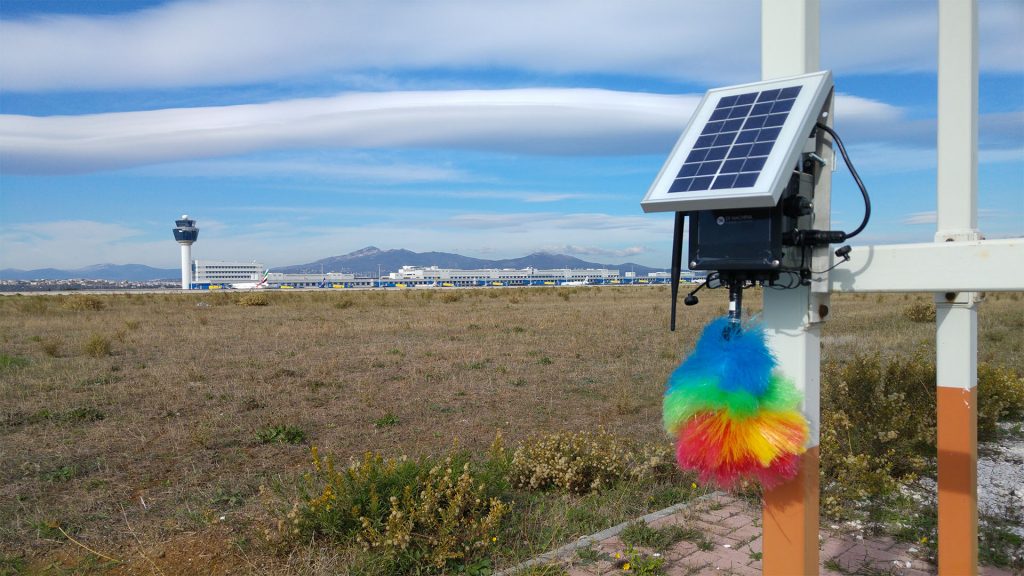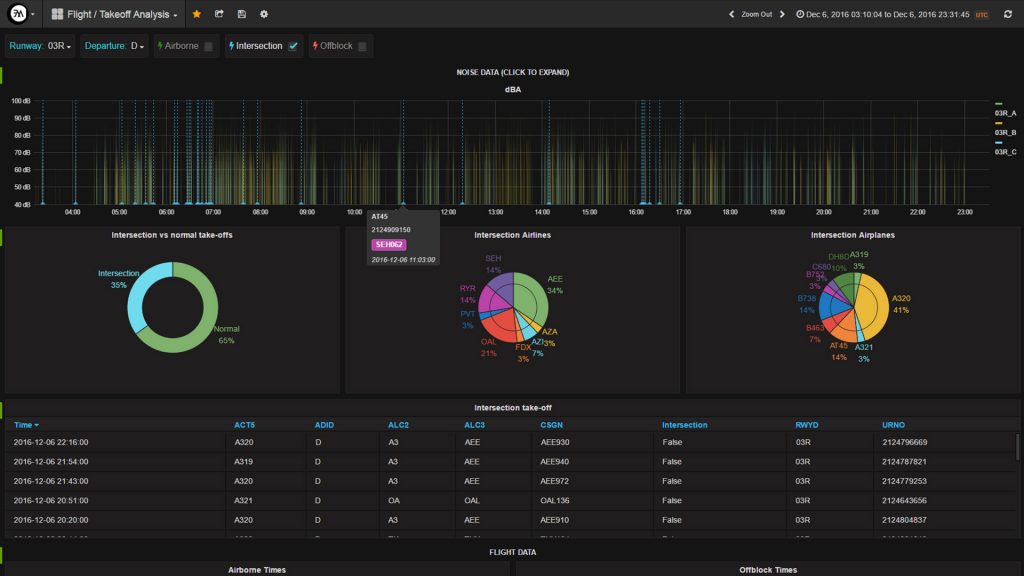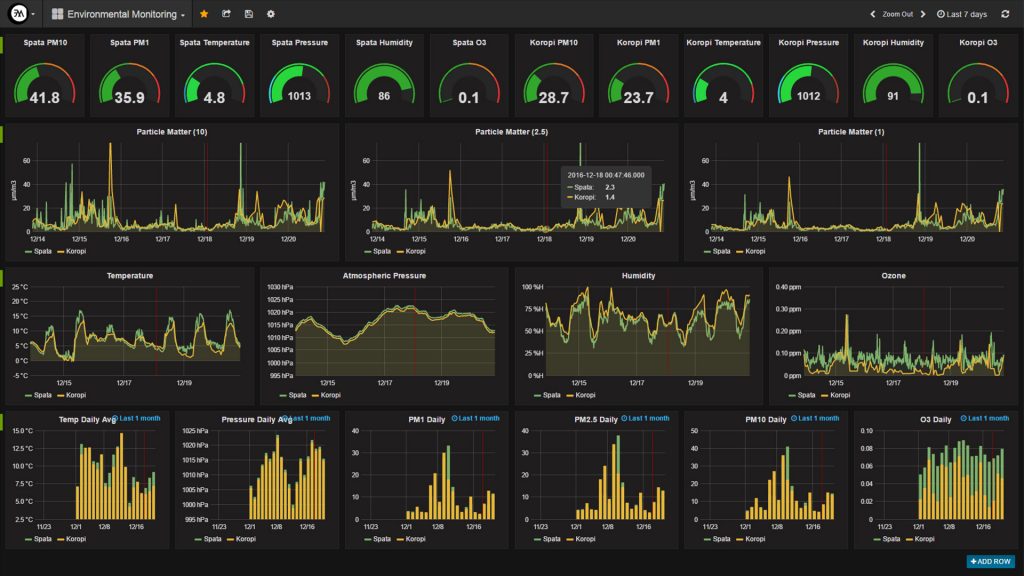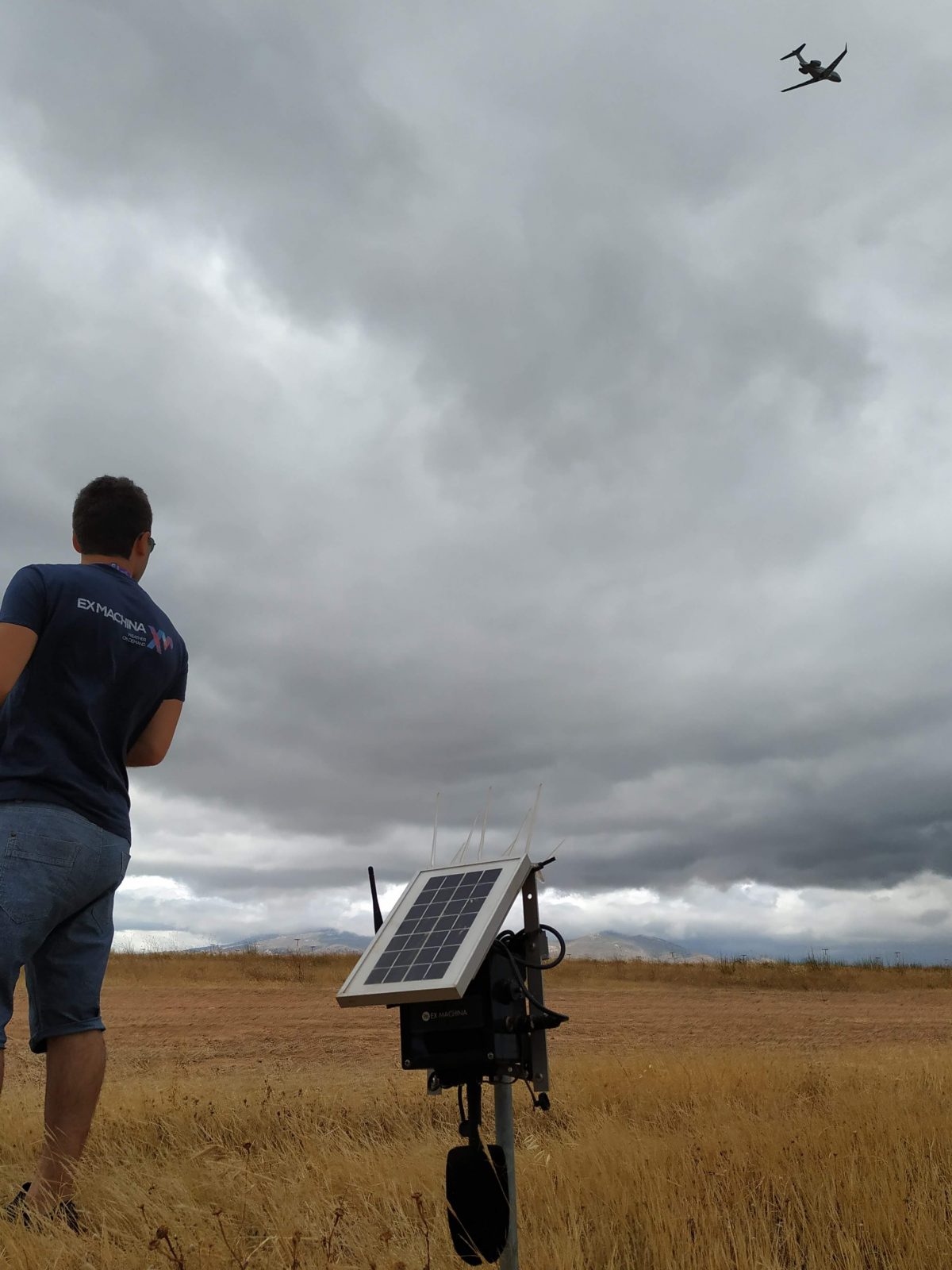Athens International Airport (AIA) is Greece’s biggest airport, operating since 1996, serving a total of approximately 20 mil. passengers in 2016, an increase of 10.7% from the previous year. Showing a strong commitment to environmental protection, it is the first airport in Greece to become carbon neutral (level 3+, 2016) and one of the 28 globally.
For AIA commitment to environmental protection goes hand in hand with innovation. In 2016, in search for an innovative, custom solution to environmental monitoring, analysis and reporting, AIA partnered with Ex Machina. Two challenges were to be tackled: the need to enable air pollution monitoring in arbitrary locations and the need to better understand aircraft noise levels patterns, affecting the neighboring communities.
The first challenge involved the monitoring and analysis of air pollutant concentrations, namely for Ozone (O3) and Particulate Matter (PM1, PM2.5, PM10). Ex Machina addressed the need with a highly portable, stand-alone, connected air pollution monitoring device. The solution comprised of cost-effective, off-the-shelf hardware assembly with custom firmware. Each station (sensor node) is equipped with sensors for temperature, humidity, atmospheric pressure, ozone and particulate matter. Dual communication modules, GPRS and LoRaWAN, ensure the continuous realtime streaming of data to the cloud as well as bulk data upload and OTA firmware upgrades. The node is stand alone energy wise, bearing a photovoltaic panel and lithium batteries, which enable continuous autonomous operation, without the need for an external power source.

Acoustic localization / Noise monitoring sensor node
The aircraft noise use-case was much more challenging by nature. Ex Machina deployed an array of sound metering nodes to monitor and report on noise levels during takeoff. Just like the air quality monitoring nodes, the sound monitoring nodes are autonomous, bearing PV panels and batteries, and utilize dual wireless communications (GPRS, LoRaWAN). Through the combined analysis of the acquired data, the location of aircraft can be identified and reported to the airport’s environmental department for further statistical analysis, thus enhancing its environmental monitoring capabilities.

Ex Machina aircraft take-off noise analytics dashboard

Ex Machina air quality dashboard
The Ex Machina turn-key ΙοΤ solution combines powerful analytics, visualization and reporting on the data processing cloud side, with on-site sensor deployment and communication infrastructure for sensor data acquisition and aggregation. The LoRaWAN communications infrastructure additionally enables the use of diverse low-power wireless sensor IoT use-cases within the airport site, such as water quality monitoring, indoor climate/air quality tracking, parking space management, etc.
EXM’s strategic decision to utilize open-source technologies, provides maximum flexibility to it’s customers avoiding vendor lock-in, with protocol agnostic and at the same time secure, robust and scalable solutions. The use of open technologies to build the solution increases flexibility and transparency, providing at the same time full access to raw data for the client.
The IoT environmental monitoring solution for the Athens International Airport is a successful utilization of Ex Machina’s powerful IoT platform which provides valuable, actionable insights to the customer for regulatory compliance as well as for reducing environmental impact and improving relationships with the surrounding communities. Other industries that can benefit from this solution include oil refineries, steel, cement and mining industries, energy producers, constructors etc.


